2014 Summer Youth Olympics
|
Nanjing 2014 Youth Olympic Games official emblem | |||
| Host city | Nanjing, China | ||
|---|---|---|---|
| Motto |
Share the Games, Share our dreams (分享青春, 共筑未来) (Fēnxiǎng qīngchūn, gòng zhù wèilái) | ||
| Nations participating | 203 | ||
| Athletes participating | 3,579 | ||
| Events | 222 in 28 sports | ||
| Opening ceremony | 16 August | ||
| Closing ceremony | 28 August | ||
| Officially opened by | President Xi Jinping | ||
| Officially closed by | President Thomas Bach | ||
| Athlete's Oath | Fan Zhendong | ||
| Judge's Oath | Zhou Qiurui | ||
| Coach's Oath | Li Rongxiang | ||
| Torch lighter | Chen Ruolin | ||
| Main venue | Nanjing Olympic Sports Centre | ||
| |||
The 2014 Summer Youth Olympic Games (officially known as II Summer Youth Olympic Games) (Chinese: 第二届夏季青年奧林匹克运动会) were the second Summer Youth Olympic Games, an international sports, education and cultural festival for teenagers, held from 16 to 28 August 2014 in Nanjing, China.
Bidding process
The International Olympic Committee established the Youth Olympic Games in July 2007.[1] The 2014 host city was elected on 10 February 2010, during the 2010 IOC Session in Vancouver. This was the first election of a Youth Olympic Games host city held in an IOC Session. The elections for the host cities of the 2010 Summer Youth Olympics and 2012 Winter Youth Olympics were done through postal votes by IOC members.
| 2014 Youth Olympic Games bidding results | |||||
|---|---|---|---|---|---|
| City | NOC Name | Votes | |||
| Nanjing | 47 | ||||
| Poznań | 42 | ||||
- April 2009 – NOCs to inform the IOC of the name of a YOG Candidate City. (This was changed from February 2009 after several NOCs asked for more preparation time)[2]
- September 2009 – Submission of the YOG Candidature File, YOG Guarantees File, photographic files and Undertaking
- December 2009 – Short-list of YOG Candidate Cities by the IOC Executive Board
- February 2010 – Election and announcement of the Host City of the 2nd Summer Youth Olympic Games at the 122nd IOC Session in Vancouver (before the 2010 Winter Olympics)[3]

Logo
Like other Olympic events, the 2014 Summer Youth Games has its own logo.[4] The logo consists of three parts. The colorful "NANJING" reflects the image of the gate of Nanjing and the features of some Jiangnan houses. The various colors symbolize youths' energetic spirit.
Venues
All of the venues are located in four zones within Nanjing.[5] All venues with the exception of the cycling road, sailing, and triathlon venues, were temporary.[6]
The Nanjing Olympic Sports Center hosted the opening and closing ceremonies.
| District | Venue | Image | Sports | Capacity |
|---|---|---|---|---|
| Gulou | Longjiang Gymnasium | Judo, Wrestling | ||
| Wutaishan Sports Center | |
Basketball, Football, Table tennis | ||
| Jiangning | Fangshan Sports Training Base | Archery, Shooting | ||
| Jiangning Sports Center | Football, Handball | |||
| Jinniu Lake Sailing Venue | Sailing | |||
| Jianye | Nanjing International Expo Center |  |
Boxing, Fencing, Modern Pentathlon, Taekwondo, Weightlifting | |
| Nanjing Olympic Sports Center | 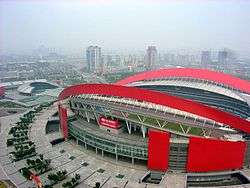 |
Aquatics, Athletics, Gymnastics, Modern Pentathlon | 60,000 | |
| Pukou | Laoshan National Forest Park | Cycling | ||
| Youth Olympic Sports Park | Beach Volleyball, Cycling, Field Hockey, Rugby Sevens | |||
| Xuanwu | Nanjing Sport Institute | Badminton, Tennis | ||
| Xinzhuang Equestrian Venue, generally known as the Nanjing International Exhibition Center | Equestrian | |||
| Xuanwu Lake Park |  |
Triathlon | ||
| Xuanwu Lake Rowing-Canoeing Venue | Canoeing, Rowing | |||
| Zhongshan International Golf Club | Golf |
Torch relay
The Youth Olympic torch was designed by the Vatti Corporation Ltd. The torch is known as the "Gate of Happiness." A structure resembling a city gate is found on the top part of the torch and the blue color of the torch represents the peaceful tranquility of Nanjing. The Yangtze which flows next to Nanjing is presented as stripes found on the handle of the torch. It is said that the torch is capable of resisting wind speeds of 11 m/s, rainfall of 50mm/h, altitude of up to 4500m and a temperature range of -15˚C to 45˚C.[7]
Following Olympic tradition the torch lighting ceremony was held on 30 April 2014 in Athens, Greece at the Panathenaic Stadium where the first Olympic Games were held. Four young athletes from Greece and China competed in a mini-relay.
The torch relay was divided into two parts. The first part was a digital relay where people who downloaded an app were able to participate in the relay through an interactive option called "Give Me Fire." When using this feature users were able to pass the Youth Olympic flame to their friends by touching their devices together. The relay visited 258 different online locations from the 204 participating NOCs over a 98-day period.[8]
After the digital relay the relay began its physical portion in Nanjing where a 10-day relay was held.[9] 104 torch bearers carried the torch singularly or in pairs over 100 legs. Torch bearers were primarily focused on youth and included individuals from sport, culture, media, volunteers and the International Olympic Committee. Notable torch bearers included two time badminton Olympian gold medalist Lin Dan, 2008 Olympic fencing gold medalist Zhong Man, director Chen Weiya and composer Bian Liunian.[10]
Sports
This is a tentative list of the sports program taken from the general presentation of the 2nd Summer Youth Olympic Games in 2014.[11] Golf and Rugby sevens will be contested for the first time. Beach volleyball will replace indoor volleyball and other format changes to sports like field hockey which introduced a five a side format. New events have also been introduced in some of the sports including a shooting mixed gender event among others.[12]
- Aquatics
-
 Archery (3) ()
Archery (3) () -
 Athletics (37) ()
Athletics (37) () -
 Badminton (3) ()
Badminton (3) () -
 Basketball (4) ()
Basketball (4) () -
_pictogram.svg.png) Beach volleyball (2) ()
Beach volleyball (2) () -
 Boxing (13) ()
Boxing (13) () -
_pictogram.svg.png) Canoeing (8) ()
Canoeing (8) () -
_pictogram.svg.png) Cycling (3) ()
Cycling (3) () -
 Equestrian (2) ()
Equestrian (2) () -
 Fencing (7) ()
Fencing (7) () -
 Field hockey (2) ()
Field hockey (2) () -
 Football (2) ()
Football (2) () -
 Golf (3) ()
Golf (3) () -
_pictogram.svg.png) Gymnastics ()
Gymnastics ()
-
_pictogram.svg.png) Artistic gymnastics (12)
Artistic gymnastics (12) -
_pictogram.svg.png) Rhythmic gymnastics (2)
Rhythmic gymnastics (2) -
_pictogram.svg.png) Trampolining (2)
Trampolining (2)
-
-
 Handball (2) ()
Handball (2) () -
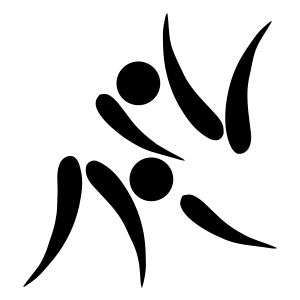 Judo (9) ()
Judo (9) () -
 Modern pentathlon (3) ()
Modern pentathlon (3) () -
 Rowing (4) ()
Rowing (4) () -
 Rugby sevens (2) ()
Rugby sevens (2) () -
 Sailing (4) ()
Sailing (4) () -
 Shooting (6) ()
Shooting (6) () -
 Table tennis (3) ()
Table tennis (3) () -
 Taekwondo (10) ()
Taekwondo (10) () -
 Tennis (5) ()
Tennis (5) () -
 Triathlon (3) ()
Triathlon (3) () -
 Weightlifting (11) ()
Weightlifting (11) () -
 Wrestling (14) ()
Wrestling (14) ()
Demonstration sports
These were the demonstration sports in the games:[13]
-
 Sport climbing ()
Sport climbing () -
 Inline speed skating ()
Inline speed skating () -
 Skateboarding ()
Skateboarding () -
 Wushu ()
Wushu ()
Medal table
The NYOGOC did not keep an official medal tally. The ranking in this table is based on information provided by the IOC and is consistent with IOC convention in its published medal tables. For the full medal table, refer to the main article.
Medals won by teams with athletes from more than one National Olympic Committee are included in the table as medals awarded to a mixed-NOCs team. There were eight events which composed entirely of mixed-NOCs teams, and as such all 25 medals in these events, including two bronzes in judo, were swept by mixed-NOCs teams. The remaining medals were won in events which combined mixed-NOCs teams and teams representing one NOC. The mixed-NOCs listing is not given a ranking.
Alongside the mixed-NOCs teams, the top ten ranked NOCs are listed below. China (highlighted), as host nation, is also included in the table. Host nation (China)
| Rank | Nation | Gold | Silver | Bronze | Total |
|---|---|---|---|---|---|
| 1 | | 38 | 13 | 14 | 65 |
| 2 | | 27 | 19 | 11 | 57 |
| — | | 13 | 12 | 14 | 39 |
| 3 | | 10 | 5 | 7 | 22 |
| 4 | | 8 | 3 | 9 | 20 |
| 5 | | 7 | 9 | 5 | 21 |
| 6 | | 7 | 8 | 8 | 23 |
| 7 | | 7 | 8 | 6 | 21 |
| 8 | | 6 | 6 | 11 | 23 |
| 9 | | 6 | 6 | 1 | 13 |
| 10 | | 5 | 6 | 1 | 12 |
Calendar
222 events are expected to be held over the 2014 Youth Olympics. The schedule will be finalized as the event becomes closer.[14]
| ● | Opening ceremony | ● | Event competitions | ● | Event finals | ● | Closing ceremony |
| August | 14th Thu | 15th Fri | 16th Sat | 17th Sun | 18th Mon | 19th Tue | 20th Wed | 21st Thu | 22nd Fri | 23rd Sat | 24th Sun | 25th Mon | 26th Tue | 27th Wed | 28th Thu | Events |
|---|---|---|---|---|---|---|---|---|---|---|---|---|---|---|---|---|
| Ceremonies | ● | ● | ||||||||||||||
| Aquatics (Diving) | 1 | 1 | 1 | 1 | 1 | 5 | ||||||||||
| Aquatics (Swimming) | 3 | 8 | 5 | 7 | 4 | 9 | 36 | |||||||||
| Archery | ● | ● | 1 | 1 | 1 | 3 | ||||||||||
| Athletics | ● | ● | ● | 13 | 12 | 11 | 1 | 37 | ||||||||
| Badminton | ● | ● | ● | ● | ● | 3 | 3 | |||||||||
| Basketball | ● | ● | ● | 2 | ● | ● | ● | ● | 2 | 4 | ||||||
| Beach volleyball | ● | ● | ● | ● | ● | ● | ● | 1 | 1 | 2 | ||||||
| Boxing | ● | ● | ● | 3 | 10 | 13 | ||||||||||
| Canoeing | ● | 4 | ● | 4 | 8 | |||||||||||
| Cycling | ● | ● | ● | ● | 2 | 1 | 3 | |||||||||
| Equestrian | ● | 1 | ● | ● | ● | 1 | 2 | |||||||||
| Fencing | 2 | 2 | 2 | 1 | 7 | |||||||||||
| Field hockey | ● | ● | ● | ● | ● | ● | ● | ● | 1 | 1 | 2 | |||||
| Football | ● | ● | ● | ● | ● | ● | ● | ● | ● | 1 | 1 | 2 | ||||
| Golf | ● | ● | 2 | ● | ● | 1 | 3 | |||||||||
| Gymnastics | ● | ● | 1 | 1 | 1 | 1 | 5 | 5 | ● | 2 | 16 | |||||
| Handball | ● | ● | ● | ● | 2 | 2 | ||||||||||
| Judo | 3 | 3 | 2 | 1 | 9 | |||||||||||
| Modern pentathlon | ● | 1 | 1 | 1 | 3 | |||||||||||
| Rowing | ● | ● | ● | 4 | 4 | |||||||||||
| Rugby sevens | ● | ● | ● | 2 | 2 | |||||||||||
| Sailing | ● | ● | ● | ● | 4 | 4 | ||||||||||
| Shooting | 1 | 1 | 1 | 1 | 1 | 1 | 6 | |||||||||
| Table tennis | ● | ● | ● | 2 | ● | ● | 1 | 3 | ||||||||
| Taekwondo | 2 | 2 | 2 | 2 | 2 | 10 | ||||||||||
| Tennis | ● | ● | ● | ● | ● | ● | 2 | 3 | 5 | |||||||
| Triathlon | 1 | 1 | 1 | 3 | ||||||||||||
| Weightlifting | 2 | 2 | 2 | 2 | 2 | 1 | 11 | |||||||||
| Wrestling | 5 | 4 | 5 | 14 | ||||||||||||
| Total gold medals | 14 | 19 | 15 | 21 | 16 | 18 | 28 | 29 | 20 | 17 | 25 | 222 | ||||
| Cumulative gold medals | 14 | 33 | 48 | 69 | 85 | 103 | 131 | 160 | 180 | 197 | 222 | |||||
| August | 14th Thu | 15th Fri | 16th Sat | 17th Sun | 18th Mon | 19th Tue | 20th Wed | 21st Thu | 22nd Fri | 23rd Sat | 24th Sun | 25th Mon | 26th Tue | 27th Wed | 28th Thu | Events |
Participating nations
203 out of 204 nations competed. Both Sierra Leone and Nigeria were planning to participate, but on 13 August 2014 both nations pulled out due to pressure from Chinese Authorities in an attempt to prevent Ebola from West Africa from entering their nation.[15] On 15 August 2014 Liberia also withdrew along with two athletes from Guinea being barred by the International Olympic Committee (IOC) due to fears that the nature of their sports (judo and swimming) could pose a risk to other athletes.[16] An athlete from South Sudan will compete under the Olympic flag as they do not have a National Olympic Committee.[17] The ten nations with the most athletes are China (with 123), Brazil (with 97), United States (with 92), Australia (with 89), Russia (with 88), Germany (with 85), Egypt (with 83), France (with 82), Japan (with 78), and Mexico (with 78).
-
 Afghanistan (1)
Afghanistan (1) -
 Albania (5)
Albania (5) -
 Algeria (33)
Algeria (33) -
 American Samoa (5)
American Samoa (5) -
 Andorra (10)
Andorra (10) -
 Angola (15)
Angola (15) -
 Antigua and Barbuda (5)
Antigua and Barbuda (5) -
 Argentina (60)
Argentina (60) -
 Armenia (14)
Armenia (14) -
 Aruba (4)
Aruba (4) -
 Australia (89)
Australia (89) -
 Austria (33)
Austria (33) -
 Azerbaijan (21)
Azerbaijan (21) -
 Bahamas (14)
Bahamas (14) -
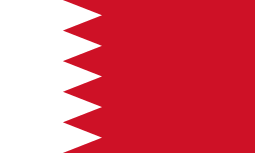 Bahrain (5)
Bahrain (5) -
 Bangladesh (13)
Bangladesh (13) -
 Barbados (8)
Barbados (8) -
 Belarus (35)
Belarus (35) -
.svg.png) Belgium (33)
Belgium (33) -
 Belize (3)
Belize (3) -
 Benin (5)
Benin (5) -
 Bermuda (7)
Bermuda (7) -
 Bhutan (2)
Bhutan (2) -
 Bolivia (7)
Bolivia (7) -
 Bosnia and Herzegovina (6)
Bosnia and Herzegovina (6) -
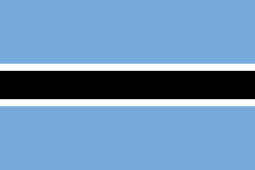 Botswana (8)
Botswana (8) -
 Brazil (97)
Brazil (97) -
 British Virgin Islands (8)
British Virgin Islands (8) -
 Brunei (3)
Brunei (3) -
 Bulgaria (27)
Bulgaria (27) -
 Burkina Faso (3)
Burkina Faso (3) -
 Burundi (8)
Burundi (8) -
 Cambodia (3)
Cambodia (3) -
 Cameroon (3)
Cameroon (3) -
 Canada (72)
Canada (72) -
 Cape Verde (20)
Cape Verde (20) -
 Cayman Islands (5)
Cayman Islands (5) -
 Central African Republic (2)
Central African Republic (2) -
 Chad (2)
Chad (2) -
 Chile (15)
Chile (15) -
 China (host) (123)
China (host) (123) -
 Colombia (34)
Colombia (34) -
 Comoros (4)
Comoros (4) -
 Congo (8)
Congo (8) -
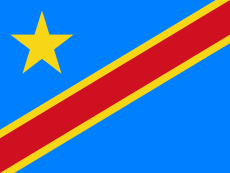 DR Congo (4)
DR Congo (4) -
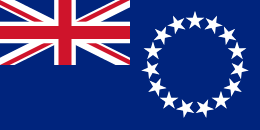 Cook Islands (4)
Cook Islands (4) -
 Costa Rica (3)
Costa Rica (3) -
 Croatia (24)
Croatia (24) -
 Cuba (12)
Cuba (12) -
 Cyprus (6)
Cyprus (6) -
 Czech Republic (37)
Czech Republic (37) -
 Denmark (15)
Denmark (15) -
 Djibouti (5)
Djibouti (5) -
 Dominica (2)
Dominica (2) -
 Dominican Republic (10)
Dominican Republic (10) -
 Ecuador (19)
Ecuador (19) -
 Egypt (83)
Egypt (83) -
 El Salvador (8)
El Salvador (8) -
 Equatorial Guinea (2)
Equatorial Guinea (2) -
 Eritrea (3)
Eritrea (3) -
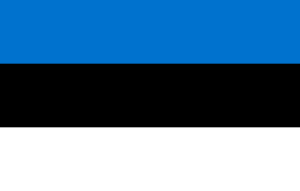 Estonia (17)
Estonia (17) -
 Ethiopia (15)
Ethiopia (15) -
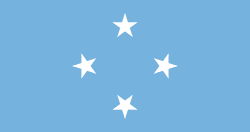 Federated States of Micronesia (4)
Federated States of Micronesia (4) -
 Fiji (26)
Fiji (26) -
 Finland (14)
Finland (14) -
 France (82)
France (82) -
 Gabon (3)
Gabon (3) -
 The Gambia (2)
The Gambia (2) -
 Georgia (12)
Georgia (12) -
 Germany (85)
Germany (85) -
 Ghana (10)
Ghana (10) -
 Great Britain (33)
Great Britain (33) -
 Greece (22)
Greece (22) -
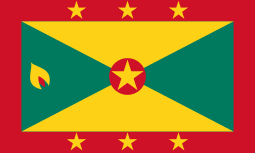 Grenada (4)
Grenada (4) -
 Guam (8)
Guam (8) -
 Guatemala (20)
Guatemala (20) -
 Guinea (4)
Guinea (4) -
 Guinea-Bissau (2)
Guinea-Bissau (2) -
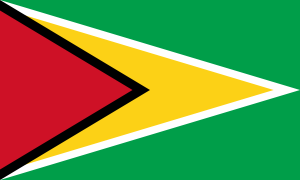 Guyana (4)
Guyana (4) -
 Haiti (3)
Haiti (3) -
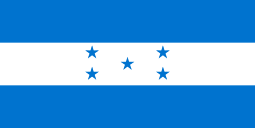 Honduras (21)
Honduras (21) -
 Hong Kong (18)
Hong Kong (18) -
 Hungary (57)
Hungary (57) -
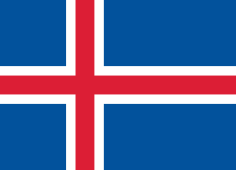 Iceland (20)
Iceland (20) -
 India (32)
India (32) -
 Indonesia (27)
Indonesia (27) -
 Independent Olympic Athletes (1)
Independent Olympic Athletes (1) -
 Iran (16)
Iran (16) -
 Iraq (5)
Iraq (5) -
 Ireland (16)
Ireland (16) -
 Israel (14)
Israel (14) -
 Italy (68)
Italy (68) -
 Ivory Coast (4)
Ivory Coast (4) -
 Jamaica (20)
Jamaica (20) -
 Japan (78)
Japan (78) -
 Jordan (6)
Jordan (6) -
 Kazakhstan (51)
Kazakhstan (51) -
 Kenya (24)
Kenya (24) -
 Kiribati (3)
Kiribati (3) -
 North Korea (6)
North Korea (6) -
 South Korea (74)
South Korea (74) -
 Kuwait (5)
Kuwait (5) -
 Kyrgyzstan (7)
Kyrgyzstan (7) -
 Laos (2)
Laos (2) -
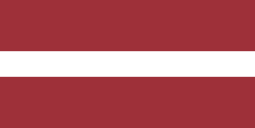 Latvia (13)
Latvia (13) -
 Lebanon (4)
Lebanon (4) -
 Lesotho (7)
Lesotho (7) -
 Libya (3)
Libya (3) -
 Liechtenstein (1)
Liechtenstein (1) -
 Lithuania (21)
Lithuania (21) -
 Luxembourg (4)
Luxembourg (4) -
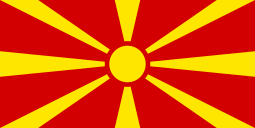 Macedonia (5)
Macedonia (5) -
 Madagascar (3)
Madagascar (3) -
 Malawi (5)
Malawi (5) -
 Malaysia (20)
Malaysia (20) -
 Maldives (3)
Maldives (3) -
 Mali (4)
Mali (4) -
 Malta (4)
Malta (4) -
 Marshall Islands (4)
Marshall Islands (4) -
.svg.png) Mauritania (3)
Mauritania (3) -
 Mauritius (4)
Mauritius (4) -
 Mexico (78)
Mexico (78) -
 Moldova (11)
Moldova (11) -
 Monaco (1)
Monaco (1) -
 Mongolia (5)
Mongolia (5) -
 Montenegro (5)
Montenegro (5) -
 Morocco (15)
Morocco (15) -
 Mozambique (3)
Mozambique (3) -
 Myanmar (4)
Myanmar (4) -
 Namibia (30)
Namibia (30) -
 Nauru (2)
Nauru (2) -
 Nepal (2)
Nepal (2) -
 Netherlands (41)
Netherlands (41) -
 New Zealand (50)
New Zealand (50) -
 Nicaragua (4)
Nicaragua (4) -
 Niger (4)
Niger (4) -
 Norway (31)
Norway (31) -
 Oman (3)
Oman (3) -
 Pakistan (12)
Pakistan (12) -
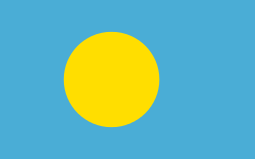 Palau (3)
Palau (3) -
 Palestine (4)
Palestine (4) -
 Panama (8)
Panama (8) -
 Papua New Guinea (24)
Papua New Guinea (24) -
 Paraguay (10)
Paraguay (10) -
 Peru (40)
Peru (40) -
 Philippines (7)
Philippines (7) -
 Poland (59)
Poland (59) -
 Portugal (21)
Portugal (21) -
 Puerto Rico (23)
Puerto Rico (23) -
 Qatar (21)
Qatar (21) -
 Romania (41)
Romania (41) -
 Russia (88)
Russia (88) -
 Rwanda (11)
Rwanda (11) -
 Saint Kitts and Nevis (3)
Saint Kitts and Nevis (3) -
 Saint Lucia (6)
Saint Lucia (6) -
 Saint Vincent and the Grenadines (4)
Saint Vincent and the Grenadines (4) -
 Samoa (2)
Samoa (2) -
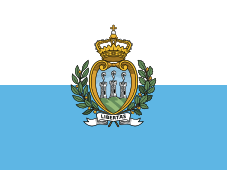 San Marino (3)
San Marino (3) -
 São Tomé and Príncipe (4)
São Tomé and Príncipe (4) -
 Saudi Arabia (5)
Saudi Arabia (5) -
 Senegal (6)
Senegal (6) -
 Serbia (24)
Serbia (24) -
 Seychelles (3)
Seychelles (3) -
 Singapore (18)
Singapore (18) -
 Slovakia (38)
Slovakia (38) -
 Slovenia (48)
Slovenia (48) -
 Somalia (2)
Somalia (2) -
 Solomon Islands (3)
Solomon Islands (3) -
 South Africa (55)
South Africa (55) -
 Spain (66)
Spain (66) -
 Sri Lanka (9)
Sri Lanka (9) -
 Sudan (5)
Sudan (5) -
 Suriname (6)
Suriname (6) -
 Swaziland (4)
Swaziland (4) -
 Sweden (33)
Sweden (33) -
 Switzerland (19)
Switzerland (19) -
 Syria (9)
Syria (9) -
 Chinese Taipei (47)
Chinese Taipei (47) -
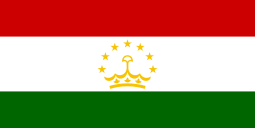 Tajikistan (8)
Tajikistan (8) -
 Tanzania (4)
Tanzania (4) -
 Thailand (37)
Thailand (37) -
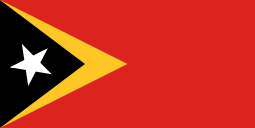 Timor-Leste (2)
Timor-Leste (2) -
 Togo (3)
Togo (3) -
 Tonga (3)
Tonga (3) -
 Trinidad and Tobago (11)
Trinidad and Tobago (11) -
 Tunisia (50)
Tunisia (50) -
 Turkey (41)
Turkey (41) -
 Turkmenistan (3)
Turkmenistan (3) -
 Tuvalu (3)
Tuvalu (3) -
 Uganda (6)
Uganda (6) -
 Ukraine (58)
Ukraine (58) -
 United Arab Emirates (4)
United Arab Emirates (4) -
 United States (92)
United States (92) -
 Uruguay (22)
Uruguay (22) -
 Uzbekistan (28)
Uzbekistan (28) -
 Vanuatu (21)
Vanuatu (21) -
 Venezuela (59)
Venezuela (59) -
 Vietnam (13)
Vietnam (13) -
 Virgin Islands (5)
Virgin Islands (5) -
 Yemen (3)
Yemen (3) -
 Zambia (24)
Zambia (24) -
 Zimbabwe (10)
Zimbabwe (10)
Cultural and education program
Youth Olympic Games incorporate a Cultural and Education Program, featuring a variety of cultural and educational activities for young people. Youth Olympics include educational experience based on Olympic values that promote healthy lifestyles and allow young athletes to become well-rounded people with "true sporting spirits."[1] Well-known athletes and "international specialists" guide the young participants. The program combines "Olympic traditions (such as the torch relay) with diverse cultures to spread the Olympic spirit."[1]
Athlete role models
On 17 March 2014 37 athletes from the 28 Olympic sports were chosen by the IOC to be role models at the 2014 Youth Olympics. The athletes will offer support, mentor and advice to the participating youth Olympians. As an athlete role model they will take part in activities and workshops on healthy lifestyles, social responsibility and Olympism. They will also take part in informal chats known as "chat with champions."[18][19] On 9 April 2014 and 22 April 2014 footballer Simone Farina and swimmer Patrick Murphy were appointed as the 38th and 39th Athlete Role Model respectively.[20][21]
| Sport | Athlete Role Model | NOC | Olympics Participated |
|---|---|---|---|
| Aquatics (Diving) | Minxia Wu | | 2004, 2008, 2012 |
| Aquatics (Swimming) | Patrick Murphy | | 2004, 2008 |
| Archery | Khatuna Lorig | | 1992, 1996, 2000, 2008, 2012[a] |
| Athletics | Dwight Phillips | | 2000, 2004 |
| Athletics | Kajsa Bergqvist | | 1996, 2000 |
| Athletics | Liu Xiang | | 2004, 2008, 2012 |
| Badminton | Nathan Robertson | | 2000, 2004, 2008 |
| Badminton | Cheng Wen Hsing | | 2004, 2008, 2012 |
| Basketball | Jorge Garbajosa | | 2000, 2004, 2008 |
| Basketball | Anna Arkhipova | | 2000, 2004 |
| Boxing | Ren Cancan | | 2012 |
| Canoeing (Sprint) | Lisa Carrington | | 2012 |
| Cycling (Track) | Frédéric Magné | | 1988, 1992, 1996, 2000 |
| Equestrian (Jumping) | Samantha Lam | | 2008 |
| Fencing | Lei Sheng | | 2008, 2012 |
| Fencing | Miles Chamley-Watson | | 2012 |
| Football | Simone Farina | | |
| Football | Sun Wen | | 1996, 2000 |
| Golf | Grace Park | | |
| Gymnastics (Artistic) | Jani Tanskanen | | |
| Gymnastics (Artistic) | Elizabeth Tweddle | | 2004, 2008, 2012 |
| Gymnastics (Rhythmic) | Luboŭ Čarkašyna | | 2012 |
| Gymnastics (Trampoline) | Nuno Merino | | 2004 |
| Handball | Alexandra do Nascimento | | 2004, 2008, 2012 |
| Field Hockey | Teun de Nooijer | | 1996, 2000, 2004, 2008, 2012 |
| Judo | Lucie Decosse | | 2004, 2008, 2012 |
| Modern Pentathlon | Amelie Caze | | 2004, 2008, 2012 |
| Rowing | Erin Cafaro | | 2008, 2012 |
| Rugby Sevens | Heather Moyse | | 2006, 2010, 2014[b] |
| Sailing | Juan Perdomo | | |
| Shooting | Ivana Maksimovic | | 2012 |
| Table Tennis | Jorgen Persson | | 1988, 1992, 1996, 2000, 2004, 2008, 2012 |
| Table Tennis | Wang Liqin | | 2000, 2004, 2008 |
| Taekwondo | Wu Jingyu | | 2008, 2012 |
| Tennis | Paradorn Srichaphan | | 2000, 2004 |
| Triathlon | Emma Snowsill | | 2008 |
| Volleyball (Beach) | Zhang Xi | | 2008, 2012 |
| Weightlifting | Kendrick Farris | | 2008, 2012 |
| Wrestling | Kaori Icho | | 2004, 2008, 2012 |
- a Khatuna Lorig competed for the Unified Team in 1992 and Georgia in 1996 and 2000.
- b Heather Moyse competed in Bobsleigh at the 2006, 2010 and 2014 Winter Olympics.
Young ambassadors
A total of 104 people were selected by their National Olympic Committee to be young ambassadors. Young Ambassadors are aged between 18 and 25 and are athletes, coaches, students or young professionals that demonstrate the Olympic values and inspire and empower young people to do the same.[22]
The main roles of the Young Ambassadors is to promote the Youth Olympics in their nations and to encourage athletes of their nations to get the most out of the Youth Olympic experience by encouraging them to interact with people from different sports and cultures and to take part in activities and workshops.[23]
A seminar has held from 25–28 March 2014 in order to prepare the ambassadors for the Youth Olympics by teaching them about the cultures and activities Nanjing has to offer.[24]
| NOC | Name | Sports | Notes |
|---|---|---|---|
| | Abdelmalek Lahoulou | Athletics | |
| | Andreia Miranda Goncalves | Swimming | |
| | Jose Ignacio Fossati Ariznabarreta | Boxing | |
| | Jessica Fox | Canoeing Slalom | 2010 Youth Olympian, 2012 Olympian |
| | Stefan Janisch | Snowboarding, Tennis | |
| | Arzu Məmmədova | Football | |
| | Megan Shepherd | Sports Writer | |
| | Mohammed Farhadur Rahman | Basketball, Cricket, Football | |
| | Ryan O'Neal Brathwaite | Cake Baker and Decorator | |
| | Nastasja Špileŭska | Tennis | NOC Staff |
| | Sophie Paris | Ski Mountaineering | NOC Staff |
| | Edin Branković | Short-Track Speed Skating | |
| | Mothusi Ramaabya | Auditing and Advisory | |
| | Lara Teixeira | Synchronized Swimming | 2008, 2012 Olympian |
| | Damyan Dikov | Basketball | Coach |
| | Prosper Babinne | Football | NOC Volunteer |
| | Dillon Richardson | Baseball, Basketball | NOC Staff |
| | Joaquín Ballivián | Athletics | 2010 Youth Olympian |
| | Lu Ting | NOC Staff | |
| | Emily Yeh | Tennis | |
| | Juan Sebastian Sanchez Diaz | Orienteering Federation Volunteer | |
| | Tarapiripa Bishop | Football, Netball | |
| | Gabriel Zumbado | Triathlon | 2010 Youth Olympian |
| | Danijela Grgić | Athletics | |
| | Leydi Laura Moya Lopez | Modern Pentathlon | 2010 Youth Olympian |
| | Chrystalleni Trikomiti | Gymnastics Rhythmic | 2012 Olympian |
| | Klara Mejdricka | Volleyball | |
| | Ann-Sofie Dalsgaard | Football | NOC Staff |
| | Estefania George | NOC Staff | |
| | Adriana Lastra Cabezas | Athletics | |
| | Mostafa Awadalla | Handball | 2010 Youth Olympian |
| | Laura-Maria Lehiste | Judo | |
| | Desalegn Medibaw | Football | |
| | Matelita Buadromo | Swimming | 2012 Olympian |
| | Laura Lepisto | Figure Skating | 2010 Olympian |
| | Thomas Bouhail | Gymnastics Artistic | 2008 Olympian |
| | Marlene Gomez Islinger | Triathlon | 2010 Youth Olympian |
| | Max Betteridge | Football | Coach |
| | Filippos Papageorgiou | Equestrian | |
| | Kara Archibald | Swimming | Coach |
| | Gabriela Matus Bonilla | Athletics | |
| | Sacha Durocher | Equestrian | Coach |
| | Hoi Shun Stephanie Au | Swimming | 2008, 2012 Olympian |
| | Bjarki Benediktsson | Football | Coach |
| | Irham Fadli | NOC Volunteer | |
| | Leah Ewart | Field Hockey | 2010 Youth Olympian |
| | Elisa Santoni | Gymnastics Rhythmic | 2004, 2008, 2012 Olympian |
| | Ruth Gbagbi | Taekwondo | 2010 Youth Olympian, 2012 Olympian |
| | Kedisha Dallas | Athletics | |
| | Ran Yagisawa | Dancesport | |
| | Shaden Adel Thweib | Martial Arts | |
| | Kim Da Hye | Shooting | |
| | Saltanat Ibraeva | NOC Volunteer | |
| | Toms Markss | PR Specialist at Latvian Cycling Federation | |
| | Tony Tarraf | Volleyball | Director of Lebanese Volleyball Federation |
| | Gintare Okuleviciute | Rowing | |
| | Nina Balaban | Shooting | |
| | Harinelina Rakotondramanana | Fencing | |
| | Benjamin Khor | Shooting | |
| | Henry Fenouillot de Falbaire | Swimming | |
| | Andrea Probert Avila | Football, Triathlon | |
| | Ana Maria Stratu | Karate | |
| | Tugsbayar Gansukh | Weightlifting | |
| | Ahmed Hamza Chraibi | Tennis | President and Founder of Arab Excellence |
| | Lurdi Aron | Basketball, Tennis | |
| | Joyce Seesing | Cycling BMX | |
| | Renee Hannah | Water Skiing | |
| | Torgrim Sommerfeldt | Basketball | |
| | Mahnoor Maqsood | Swimming | |
| | Hannah Ilave | Swimming, Triathlon | |
| | Carlos Caballero Gomez | Squash | |
| | Aleiandro Quinones | Canoeing | |
| | Nadine Gutierrez | Football, Muay-Thai, Swimming | NOC Intern |
| | Monika Hojnisz | Biathlon | |
| | Mariana Catarino | Swimming | |
| | Betsmara Cruz | Swimming | Coach |
| | Hannah Al-Bader | Handball | |
| | Emil Imre | Short-Track Speed Skating | |
| | Olga Ponomar | Sports Journalist | |
| | Fredric Sweeney | Sailing | Coach |
| | Youssouph Ndao | Fencing | |
| | Aleksandra Kebic | Handball | NOC Staff |
| | Rui Qi Low | Sailing | |
| | Monika Fasungova | Badminton | 2012 Olympian |
| | Vanja Mesec | Handball | |
| | Reabetewe Mpete | Field Hockey | |
| | Ishika de Silva | Rowing | |
| | Frida Nevalainen | Ice Hockey | 2006, 2010 Olympian |
| | Lisa Gisler | Curling | 2012 Youth Olympian |
| | Alaa Muntasir | Equestrian | |
| | Negmatullo Rajabaliyev | Tennis | Coach |
| | Apisada Kusolsilp | Sports Authority of Thailand Employee | |
| | Jeannette Small | Badminton | Coach and NOC Staff |
| | Marwen Chaieb | Rugby | Coach |
| | Giray Cavdar | Tennis | Coach |
| | Shamim Bangi | Badminton | |
| | Oleksandr Usyk | Boxing | 2008, 2012 Olympian |
| | Jessica Luscinski | Football | Coach and NOC Staff |
| | Jemille Vialet | Swimming | |
| | Rashid Burnashev | Athletics | |
| | Van Hao Nguyen | Athletics | |
| | Omar Al-Mogahed | Basketball, Football, Table Tennis | UN Yemeni Youth Delegate |
| | Samantha Miyanda | Football | |
| | Rukudzo Gona | Basketball, Football, Rugby |
Young reporters
Currently 30 reporters have been announced to take part of the Young Reporters program. Reporters between the ages of 18 and 24 were selected by the Continental Associations of National Olympic Committees (ANOC). Representation includes 4 reporters from each continent, 8 from China and 1 from the next Winter and Summer Youth Olympics.[25]
As an initiative to encourage people worldwide to take part of the Youth Olympic spirit this program provides young reporters with a cross-platform journalist-training program and the opportunity for on-the-job experience at the Youth Olympics. The reporters will be able to work with highly qualified and renowned professionals in the fields of broadcast, print journalism, social media and photography.[26]
| Area | Name | NOC |
|---|---|---|
| Africa | Yasmine Torche | |
| Africa | Mario Lovemore | |
| Africa | Stella Annan | |
| Africa | Zaki Saaed | |
| Americas | Maria Carolina Cabella | |
| Americas | Diego Melendreras | |
| Americas | Ricardo Chambers | |
| Americas | Emily Bayci | |
| Asia | Pallavi Prasad | |
| Asia | Ruslan Medelbek | |
| Asia | Christel El Saneh | |
| Asia | David Lozada | |
| Europe | Palina Ihnatsenka | |
| Europe | Ivan Boyanov | |
| Europe | Tomas Pavlicek | |
| Europe | Emilie Fekene | |
| Oceania | Te-Riu Artui | |
| Oceania | Jerick Sablan | |
| Oceania | Ashlee Tulloch | |
| Oceania | Ernest Ta'asi | |
| China | Chen Changjie | |
| China | Liao Jingjing | |
| China | Liu Meiying | |
| China | Wang Yang | |
| China | Yang He | |
| China | You Ziyu | |
| China | Zhu He | |
| China | Zhu Mandan | |
| Lillehammer 2016 | Vegard Skorpen | |
| Buenos Aires 2018 | Hernán Goldzycher | |
Controversies
Isolation and barring of Nigerian athletes in the Games
Following the 2014 West Africa Ebola outbreak, Chinese officials quarantined and isolated all Nigerian athletes from all sporting facilities despite all testing negative to Ebola before the games. The Nigerian Olympic committee reacted to the discrimination by withdrawing all its athletes from the games.[27][28][29]
Doping
One taekwondo athlete were disqualified on 5 November after testing positive for the banned diuretic furosemide.[30]
See also
- 2008 Summer Olympics – held in Beijing, China
- 2022 Winter Olympics – held in Beijing, China
References
- 1 2 3 "Nanjing 2014 World Youth Olympics". Olympic Council of Ireland. 28 August 2012. Retrieved 13 February 2014.
The Youth Olympic Games (YOG) is an international multi-sport event held every four years. The event will follow the existing Olympic format of staggered summer and winter games. The idea for such an event was introduced by International Olympic Committee (IOC) president Jacques Rogge in 2001. On July 5, 2007, IOC members at the 119th IOC session in Guatemala City approved the creation of a youth version of the Olympic Games.
- ↑ "IOC Extends Deadline For 2014 Youth Games Applications". Gamesbids.com. Archived from the original on 8 October 2012. Retrieved 14 February 2014.
- ↑ "Bidding Process For 2014 Summer Youth Games Begins". Gamesbids.com. Archived from the original on 8 October 2012. Retrieved 14 February 2014.
- ↑ (体坛热点)青春南京——南京青奥会会徽解读 (in Chinese). xinhuanet.com. May 2011. Retrieved 14 February 2014.
- ↑ "2014 Nanjing YOG: Venues". Nanjing2014.org. 28 March 2014. Retrieved 28 March 2014.
- ↑ Report Of The IOC Evaluation Commission For The 2nd Summer YOG in 2014 from aroundtherings.com
- ↑ "A Brief Introduction of the YOG Torch". Najing2014.org. 19 April 2014. Retrieved 30 April 2014.
- ↑ "Youth Olympic Flame Lighting Ceremony Kicks Off Nanjing 2014 Torch Relay". Najing2014.org. 30 April 2014. Retrieved 30 April 2014.
- ↑ "Youth Olympic flame burns brightly for Nanjing 2014". IOC. 30 April 2014. Retrieved 30 April 2014.
- ↑ "List of 104 Torchbearers for Physical Relay Announced". Najing2014.org. 6 August 2014. Retrieved 6 August 2014.
- ↑ "2014 Summer Youth Olympic Games Brochure" (PDF). Retrieved 4 May 2010.
- ↑ "Nanjing 2014 Youth Olympic Games- Sports Program and Summary of Qualification Systems" (PDF). Retrieved 14 February 2014.
- ↑ "Nanjing 2014 Sports lab opens its doors". International Olympic Committee. 19 August 2014. Retrieved 20 August 2014.
- ↑ "Competition Schedule". Nanjing2014.org. 29 March 2014. Retrieved 29 March 2014.
- ↑ "Ebola crisis forces Nigeria and Sierra Leone out of Nanjing 2014". insidethegames.biz. 13 August 2014. Retrieved 13 August 2014.
- ↑ "Liberia withdraw and three athletes barred from competing as Nanjing 2014 Ebola fear rises". insidethegames.biz. 15 August 2014. Retrieved 15 August 2014.
- ↑ "South Sudanese athlete to compete at Nanjing 2014 under Olympic flag". insidethegames.biz. 8 July 2014. Retrieved 9 July 2014.
- ↑ "Nanjing 2014 Athlete Role Models unveiled". insidethegames.biz. 17 March 2014. Retrieved 28 March 2014.
- ↑ "2014 Athlete Role Models List" (PDF). IOC. 17 March 2014. Retrieved 28 March 2014.
- ↑ "Farina appointed to Youth Olympic Games role". IOC. 9 April 2014. Retrieved 26 April 2014.
- ↑ "Patrick Murphy to make a splash at the Youth Olympic Games". IOC. 22 April 2014. Retrieved 30 April 2014.
- ↑ "Young Ambassadors – Nanjing 2014 Youth Olympic Games" (PDF). IOC. 1 February 2014. Retrieved 28 March 2014.
- ↑ "IOC announces impressive list of inspiring Young Ambassadors for Nanjing 2014 Youth Olympic Games". Nanjing2014.org. 1 February 2014. Retrieved 28 March 2014.
- ↑ "104 Young Ambassadors Have Arrived!". Nanjing2014.org. 25 March 2014. Retrieved 28 March 2014.
- ↑ "Young Reporters – Nanjing 2014 Youth Olympic Games" (PDF). IOC. 5 February 2014. Retrieved 29 March 2014.
- ↑ "IOC announces the Young Reporters for the Nanjing 2014 Youth Olympic Games". IOC. 5 February 2014. Retrieved 29 March 2014.
- ↑ Tony Ubani (13 August 2014). "Ebola: China quarantines Nigerian athletes at Youth Olympics". Vanguard Nigeria. Retrieved 18 August 2014.
- ↑ "Ebola: Nigeria Withdraw Athletes From Youth Olympic Games". Information Nigeria. Retrieved 18 August 2014.
- ↑ "African nations pull out of Youth Olympics in Ebola controversy". Los Angeles Times. Retrieved 18 August 2014.
- ↑ "IOC disqualifies athlete for violating anti doping rules at the summer Youth Olympic Games". IOC. Retrieved 5 November 2014.
External links
| Wikimedia Commons has media related to 2014 Summer Youth Olympics. |
- Nanjing 2014 official website (in English)
| Preceded by Singapore |
Summer Youth Olympic Games Nanjing II Youth Olympiad (2014) |
Succeeded by Buenos Aires |
